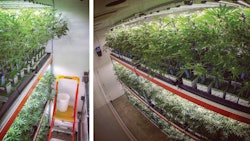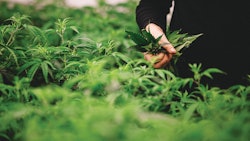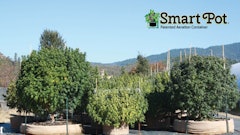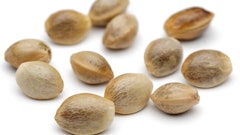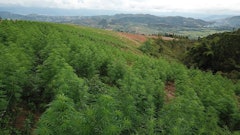

Organic growing practices are becoming increasingly popular in the cannabis industry, and one key component of that movement could be converting to a no-till farming method. A no-till farming method supports the idea of minimally disturbing the soil by growing your crops without tillage (the mechanical agitation of soil that comes from stirring and turning).
Some growers argue the no-till method can increase plants’ water absorption, as well as foster the perfect organic material in which to grow robust, healthy plants. It also helps the plants become more resilient, some farmers say, because the plants are forced to use nature to grow rather than rely on supplemental practices and chemical ingredients.
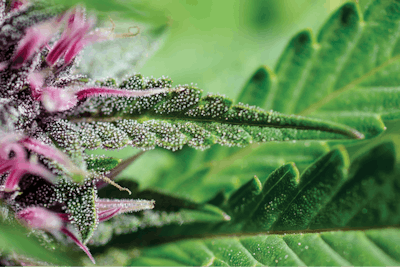
Here, Cannabis Business Times talks with two growers who are using no-till farming methods about why they opt to grow this way, what challenges they’ve faced and how you can go no-till, too.
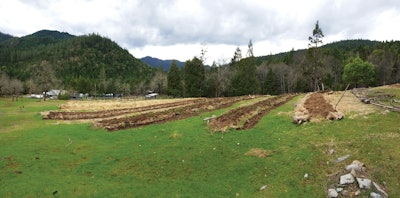
Green Source Gardens
Portland, Oregon
The team at Green Source Gardens isn’t following the no-till farming trend—it helped start it, as its cultivation team has always used this method, explains co-owner Nicholas Mahmood.
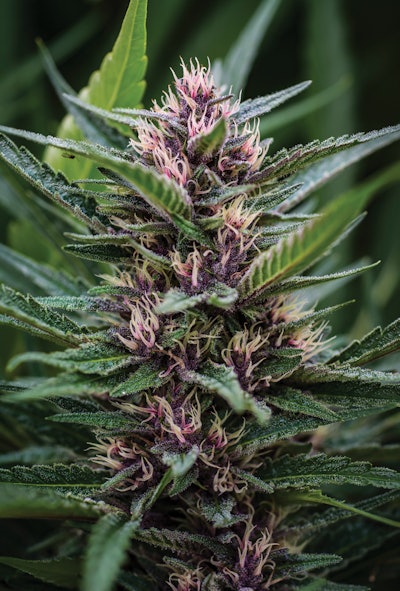
The company dove into Oregon’s recreational market in summer 2016, with 20,000 square feet of outdoor, sun-grown canopy space, which nurtures several cannabis cultivars from the popular Pinkleberry Kush to Wonderfuel, Cave Dweller, Wise Widow, Purple E.T.V., Ancient Art, Wonder Goo and many more. But before cultivating cannabis, Green Source Gardens served as a vegetable farm. It continues to grow food crops—including potatoes, greens, flowers, herbs, peppers, tomatoes, melons, cucumbers, beans and winter squash—in its fields, located on steep terrain in the upper watershed of the Rogue River.
“Before Green Source Gardens was a business, we were managing a field of no-till veggies at a historic farm in Southern Oregon,” Mahmood describes. The family’s no-till practices go even beyond the Oregon farm, as the owners were using no-till methods to farm in Arizona. “‘Regenerative agriculture’ is the current description of the farm practices we use—and not tilling the soil is a very basic foundational commitment to the larger goal that is regenerative land care,” he explains.
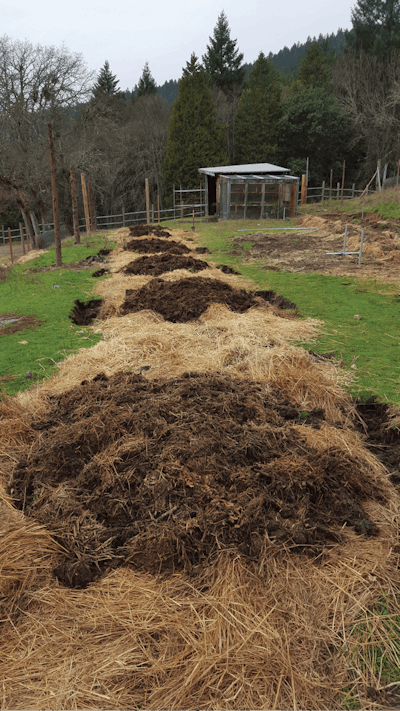
Regenerative agriculture, by Green Source Gardens’ own description, considers “ecological concepts and looks at the physics of how landscapes interact with the elements to generate life-supporting habitat,” Mahmood says. “The goal of regenerative agriculture is to work in concert with the natural forces, to partner with nature, so we can harness the energy that is freely available everywhere. By understanding and exploring concepts, including the water cycle, the carbon cycle and the mineral cycle, we can begin to formulate ideas and interact with the world with the goal to biologically remediate our badly mismanaged landscapes.”
Part of that, Mahmood says, is a commitment to no-till farming. “From our perspective, no-till simply recognizes that tilling land ultimately has negative effects on the soil and soil life, therefore compromising the soil’s ability to regenerate nutrients and fertility without the use of outsourced inputs such as minerals and concentrated amendments,” Mahmood says.
Tilling the soil can lead to a loss of carbon and minerals to atmosphere, wind and rain, he adds. Minerals and nutrients become mobile when the soil is worked on and are leached away with watering from either rain or irrigation. In turn, this can increase watershed pollution.
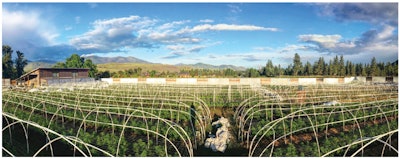
Mahmood says tillage also kills micro- and macro-biology, which are the architects of the soil, rendering the soil bare and vulnerable to the erosive forces of natural weather patterns. (Think of worms getting crushed by your rototiller.) Overall tillage, especially on a large scale, interrupts the soil’s ability to recycle nutrients and minerals necessary for regeneration.
“When biological forces, uninterrupted by tillage, are allowed to evolve and ultimately design the infrastructure of the Earth’s surface, a healthy soil food web develops and is capable of recycling all needed minerals and nutrients that make a regenerative system possible,” Mahmood says.
But even with all the good it does—for the soil, and for agriculture as a whole—the no-till farming method does present challenges for Green Source Gardens. “Time is the all-important component, and a factor most farmers do not have on their side,” Mahmood says. “Finding a way to give your space time to integrate and develop is challenging when you also have economic demands.” What’s more, as the soil and surrounding ecosystem learns to heal themselves without the use of chemical intervention, “insects as well as other animals may flourish at times, but you have to stay the course,” Mahmood says. “Nature will balance itself. One season you may have an overabundance of rodents, but then later you will see an increase of its natural predators. It can be a challenge to allow these ‘setbacks’ to happen.”
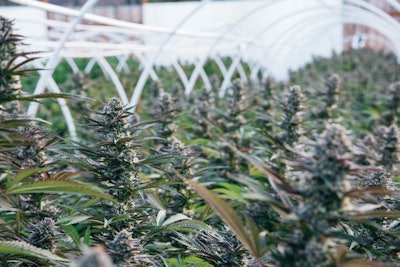
Lazy Bee Gardens
Methow Valley, Washington
Lazy Bee Gardens operates 30,000 square feet of outdoor canopy space. Twelve employees work the land without tilling the soil, says owner Matthew Frigone. The business launched in 2015, when it won its license, and Frigone spent a year building its facilities on family-owned farm land. At any given time, Lazy Bee Gardens might have 20 to 30 strains in production, with another 20 to 30 strains in testing. Wifi OG and Jack of Spades are two of the gardens’ most popular strains, but when it comes to the strains it’s testing, Frigone says Lazy Bee Gardens isn’t “looking for the hot, new strain. Instead, we tend more to hunt for genetics that are unique in their terpene profile.”
The farm grows its cannabis sustainably in living soil, but it wasn’t always a no-till operation. In fact, its growers had to “work the soil” for three years, building structure into it before it could fully switch over to no-till, Frigone says. Moving to no-till “was a really scary step, but it was worth it,” he says. “When we started on this land, we had really mineral- and nutrient-rich soil,” thanks to being located in a flood plain, he continues. “However, it’s very dense—lots of clay and silt and very little organic material—so we have had to add a lot of organic material to help build the environment.”
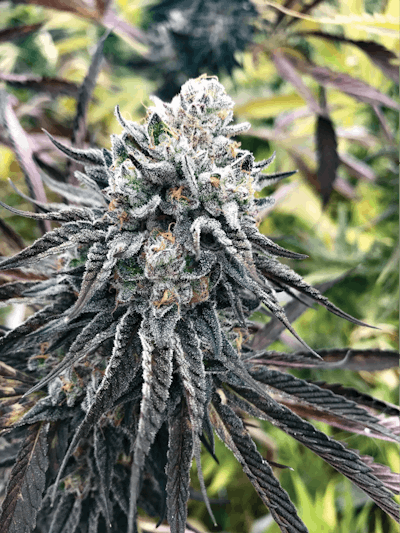
Compost, peat moss and pumice have been the main inputs outside of Lazy Bee’s amendments, which include oyster shells—they add aeration and calcium to the soil, as well as minimize the impact of root eating bugs and animals who don’t like digging through them—and malted barley for the enzymes.
“All the organic inputs are basically just providing food for microbes and fungus. The idea is to feed your soil, not your plant.”
With the right structure in place, Lazy Bee Gardens growers began planting in the no-till soil for the first time in 2017.
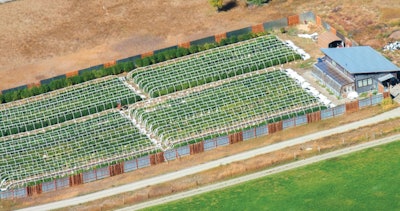
“Before, whenever I would add in nutrition, I would throw it in the row and mix it in,” Frigone describes. Now that Lazy Bee Gardens is no-till, “all you can do is toss it, but you can’t get it down in [to the soil]. We also have to make sure not to walk on the beds now” so as to not compact the soil. “This matters less if you are intending on rototilling, as you will be mixing it again anyway so the soil packing a little is less of an issue.”
He continues, “we get a lot of … growers who are like, ‘How do you not fertilize or rototill?’ And I say, ‘How does the forest grow?’ We try to recreate the natural ecosystem. We like to play God as humans, but … we really can’t come close to doing what nature has perfected.”
Even though no-till farming is still relatively new at Lazy Bee Gardens, Frigone says he can already see the plants benefiting from this method. “We always have a fair amount of transplant shock going from the greenhouse to outside,” Frigone describes, “but this year, with the new no-till farming method, we’ve experienced the least amount of shock to date.”








